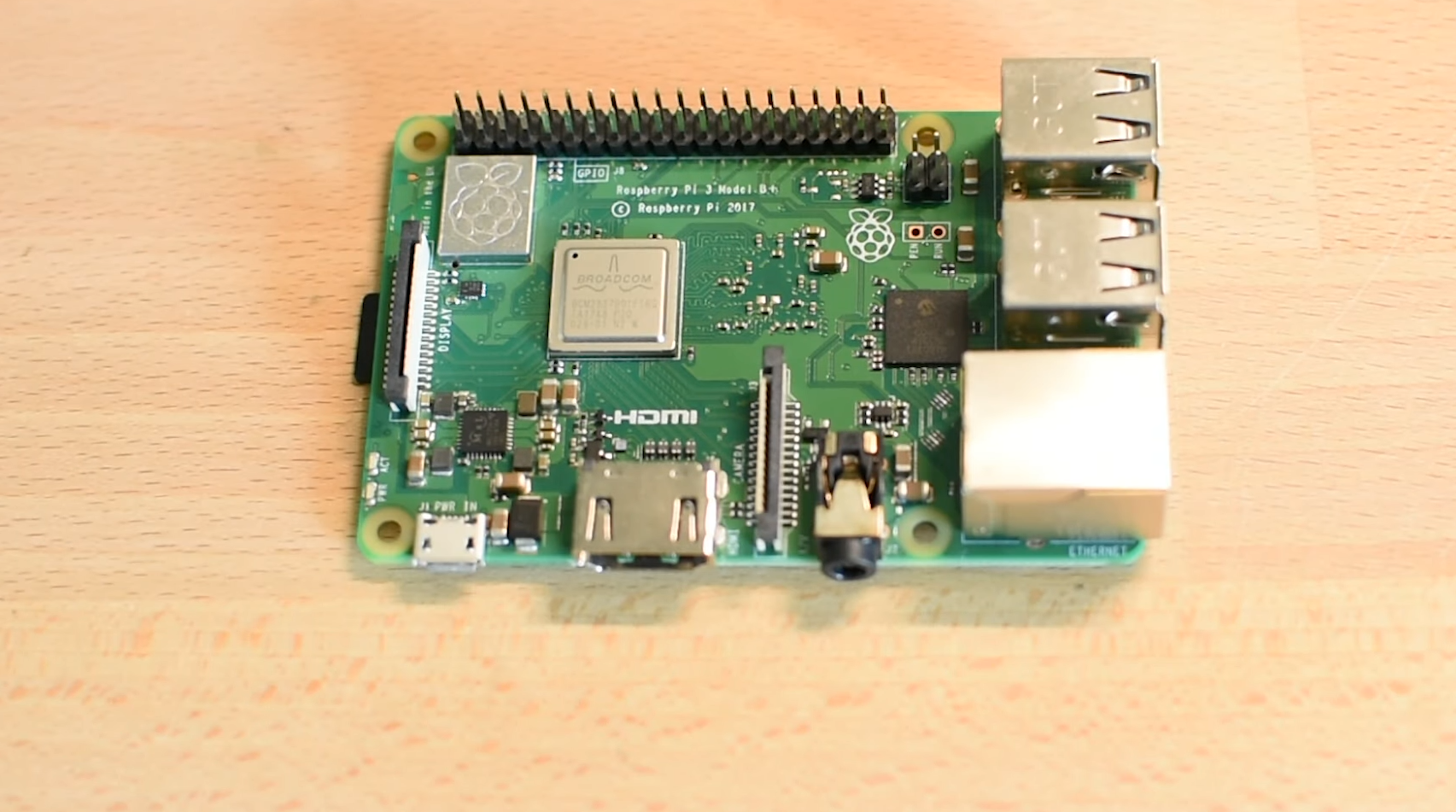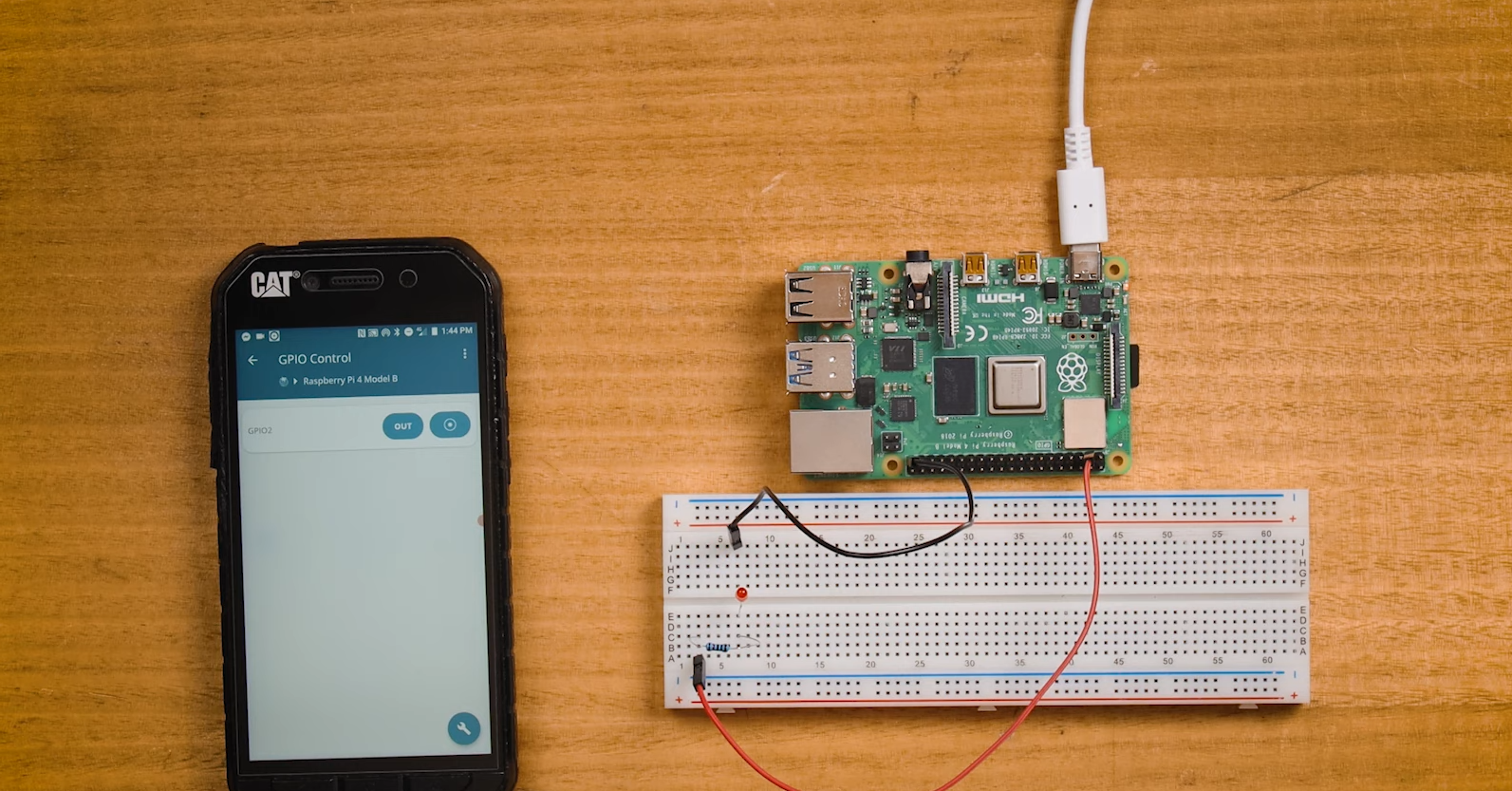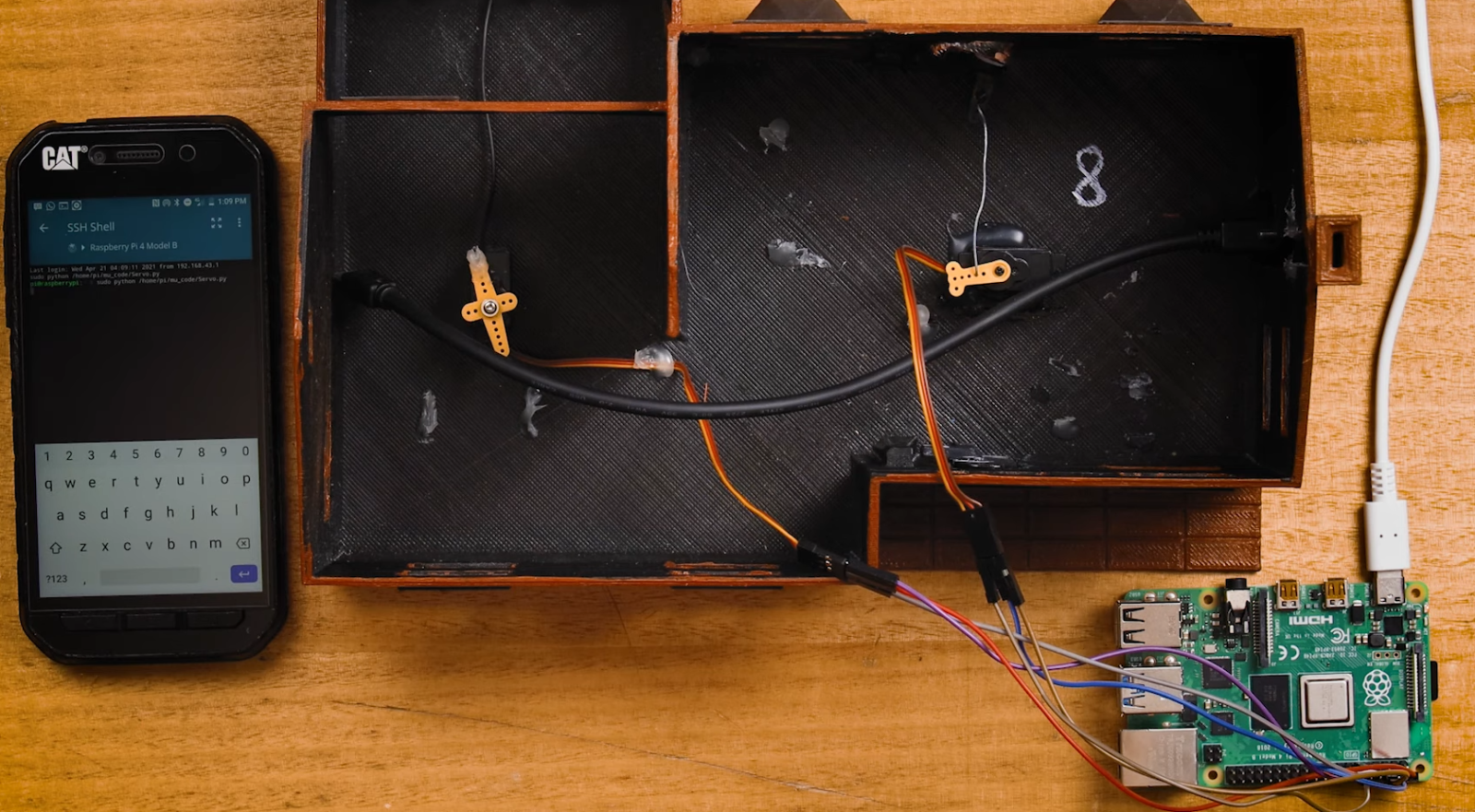Have you ever wished you could keep an eye on things far away, or even control little devices from wherever you happen to be? Well, a system that lets you do just that, especially when it involves a small computer like the Raspberry Pi, is becoming a very real possibility for a lot of people. It is, in a way, about giving you a sort of 'supervision' over your gadgets, no matter where they are physically located. This kind of setup means you could check on sensors in a garden from your living room, or perhaps switch on a light at a vacation home while you are still at your regular place, you know, just like that.
This whole idea, pairing remote control with tiny internet-connected devices, is actually quite a useful thing for many different situations. It allows for a new level of interaction with our physical surroundings, giving us ways to gather information and make changes without needing to be right there. So, whether it's for a home project or something a bit bigger, using a Raspberry Pi as the brains behind a system that manages other internet-connected things from a distance can open up a lot of interesting possibilities. It's really about extending your reach, you could say.
People are finding more and more reasons to set up these kinds of systems, seeing how they can simplify tasks or even make new things possible. From keeping an eye on temperatures in a far-off shed to making sure a water pump is running correctly on a farm, having a central spot to watch over and direct these little internet-connected helpers, with a Raspberry Pi doing a lot of the heavy lifting, makes things pretty convenient. It's a rather clever way to stay connected to your stuff, basically.
- Did Martha Maccallum Have A Face Lift
- Remote Iot Platform Ssh Download Android
- Gocryptobetcom
- Lorenza Alagna
- Eerome
Table of Contents
- What is a Remote IoT Management Platform for Raspberry Pi, anyway?
- The Core Idea of a Remote IoT Management Platform Raspberry Pi
- Why Choose Raspberry Pi for Remote IoT Management?
- What Makes a Raspberry Pi Good for a Remote IoT Management Platform?
- How Can You Use a Remote IoT Management Platform Raspberry Pi?
- Practical Applications for Your Remote IoT Management Platform Raspberry Pi
- Getting Started with Your Remote IoT Management Platform
- What Do You Need to Begin with a Remote IoT Management Platform Raspberry Pi?
What is a Remote IoT Management Platform for Raspberry Pi, anyway?
When we talk about a remote internet-connected device management setup that uses a Raspberry Pi, we are really talking about a system that lets you look after and control small pieces of equipment from somewhere else. Think of it like having a central "control room" for all your little internet-connected gadgets, but this control room does not have to be physically close to them. It could be on your computer at home, or even your phone when you are out and about. This setup is pretty much about making sure all your devices are doing what they should, and if they are not, you can tell them to do something different, all from a distance. It is, in some respects, a way to keep tabs on things without needing to be right there. This kind of system helps you get information from sensors, like temperature readings or whether a door is open, and then it lets you send commands back, like turning a light on or off. It is all done over the internet, naturally, making the distance between you and your devices not really a problem at all.
The Core Idea of a Remote IoT Management Platform Raspberry Pi
The main thought behind a remote internet-connected device management platform that uses a Raspberry Pi is pretty simple: you want to extend your ability to interact with things. The Raspberry Pi, being a small, affordable computer, acts like a sort of "middleman" or a "brain" for your distant gadgets. It gathers all the bits of information they send, like readings from a garden moisture sensor, and then it passes that information along to you, often through a website or a special application on your phone. You, in turn, can then send instructions back through that same system, telling the Raspberry Pi to, say, turn on the sprinklers connected to it. This whole arrangement means you do not have to be physically present to know what is going on or to make something happen. It is, basically, about having a constant connection to your devices, wherever they might be, which is pretty neat. This kind of setup helps keep things running smoothly, even when you are not around, you know, just by providing that continuous link.
Why Choose Raspberry Pi for Remote IoT Management?
People often pick the Raspberry Pi for these kinds of distant device supervision systems for a few good reasons. First off, it is quite small, about the size of a credit card, so it can fit into tight spots. Then there is the cost; it is rather inexpensive, which means you can get started without spending a lot of money. This makes it a really good choice for personal projects or for trying out new ideas without a big financial commitment. Another big plus is how much support there is for it. There is a huge group of people all over the world who use Raspberry Pis, and they share a lot of helpful advice and solutions online. So, if you run into a puzzle, chances are someone else has already figured it out and shared the answer. It is, in a way, like having a built-in support team, which is pretty comforting when you are setting something new up. Also, it uses very little power, which is a nice thing if you want your system to run for a long time without a lot of energy going out.
- Best Remoteiot Behind Router Raspberry Pi Free
- Unban Games G
- Best Remoteiot Device Access Free
- Onlyfans Ms Sethi
- Beegcom
What Makes a Raspberry Pi Good for a Remote IoT Management Platform?
So, what exactly makes a Raspberry Pi such a fitting piece of equipment for a remote internet-connected device management platform? Well, it is actually quite versatile. It can connect to the internet using Wi-Fi or an ethernet cable, which means it can send and receive information from pretty much anywhere. It also has these special pins, called GPIO pins, that let it talk directly to other little gadgets like sensors, lights, or motors. This means it can be the central point that gathers information from all sorts of different devices and then sends out commands to them. Plus, it runs a version of the Linux operating system, which is very flexible and lets you install all sorts of software to make it do exactly what you want. You can write your own programs for it in languages like Python, which is relatively easy to pick up. All these things put together mean that a Raspberry Pi is a pretty capable little computer for managing things from afar, giving you a lot of control over your remote internet-connected device management platform, you know, for all sorts of tasks. It is just a very adaptable piece of kit, really.
How Can You Use a Remote IoT Management Platform Raspberry Pi?
The ways you can put a remote internet-connected device management platform that uses a Raspberry Pi to work are quite varied, honestly. People use them for all sorts of practical things, making everyday life a bit smoother or helping out with bigger projects. For example, in a home setting, you could set one up to keep an eye on your indoor plants, making sure they get enough water by checking soil moisture levels and perhaps even turning on a small pump if they are too dry. Or, you could use it to control your lights or thermostat from your phone when you are not home, which is pretty handy. On a slightly larger scale, imagine a small farm where a Raspberry Pi could monitor the conditions in a greenhouse, like temperature and humidity, and then adjust fans or heaters as needed, all without someone having to be there constantly. It is, basically, about automating tasks and getting real-time updates from places that are not always easy to get to. This kind of setup just makes things more efficient, you know, for a lot of different uses.
Practical Applications for Your Remote IoT Management Platform Raspberry Pi
Let us think about some specific ways you might actually use a remote internet-connected device management platform with a Raspberry Pi at its heart. Consider a security setup: you could have a small camera connected to the Pi that sends you pictures if it detects movement, allowing you to check on your property from anywhere. Or, perhaps you have a shed or garage far from your house, and you want to know if the door is open or if the temperature drops too low; a Pi can send you alerts. For hobbyists, it could be a system that monitors the water quality in a fish tank and adjusts things like the filter or heater based on what it finds. Businesses, even small ones, might use it to track inventory in a storage area or to keep an eye on machinery performance without needing a person to constantly check. The real beauty of a remote internet-connected device management platform Raspberry Pi system is its adaptability, allowing you to create solutions that fit your very specific needs, which is quite a good thing. It is, more or less, about making your environment work for you, even when you are not physically present.
Getting Started with Your Remote IoT Management Platform
If you are thinking about setting up your own remote internet-connected device management platform, getting started is actually not as hard as it might seem. The first thing you will probably want to do is pick out the right Raspberry Pi model for what you have in mind. There are a few different versions, some more powerful than others, so choosing one that fits your project is a good initial step. Then, you will need to get the operating system onto a small memory card, which is pretty straightforward. After that, it is about connecting your Raspberry Pi to the internet and then deciding what kind of sensors or devices you want it to talk to. You will also need to think about how you want to manage everything from afar, whether that is through a simple web page you create, a special application, or perhaps using an existing service that helps with remote device control. It is, in a way, a step-by-step process, and each step builds on the last. You know, just take it one piece at a time.
What Do You Need to Begin with a Remote IoT Management Platform Raspberry Pi?
So, if you are ready to begin with your very own remote internet-connected device management platform that uses a Raspberry Pi, what are the basic bits and pieces you will want to gather? Obviously, you will need a Raspberry Pi itself, along with a power supply that is right for it. A memory card, usually a microSD card, is also a must, as that is where the operating system and your programs will live. You will also want a way to connect it to the internet, so either a Wi-Fi dongle if your Pi does not have built-in Wi-Fi, or an ethernet cable. Beyond these core items, what else you need really depends on what you want your remote internet-connected device management platform Raspberry Pi setup to do. If you are monitoring temperature, you will need a temperature sensor. If you are controlling a light, you will need a relay or a smart light switch that the Pi can talk to. Some wires and a breadboard might be useful for connecting things up, too. And, of course, a computer to do the initial setup and write any code you might need. It is, essentially, about gathering the tools for your specific purpose, which is quite simple once you know what you are aiming for.
- Ssh Remote Iot Raspberry Pi Example Free
- Remoteiot Vpc
- Ssh Raspberry Pi Iot Tutorial
- Eromecom
- Jake Shears Net Worth


